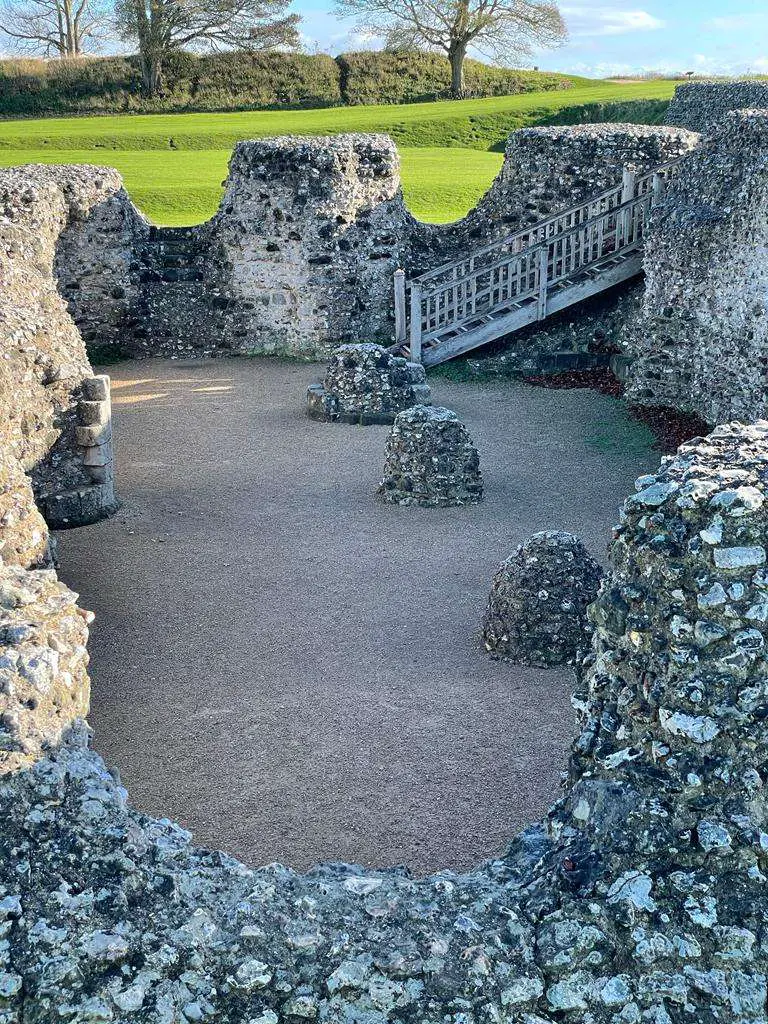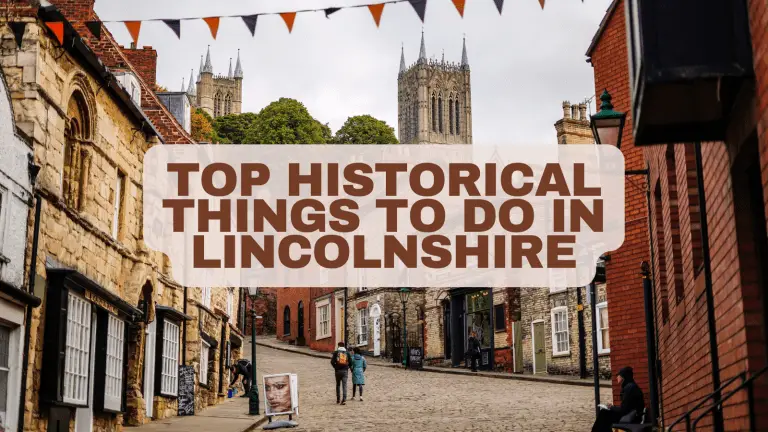Old Sarum: Massive Iron Age Fort, William the Conqueror’s Palace and Cathedral Site
Old Sarum: thousands of years of history on a huge raised earthworks.
Positioned on a hill close to Salisbury, Wiltshire, Old Sarum has a royal castle, palace and cathedral, all contained inside a massive fortification dating back to the Iron Age.
It is possibly one of the most unappreciated historic sites in the United Kingdom. Indeed, few people are likely to have heard of it. Perhaps it is overshadowed by the proximity of Stonehenge, just over six miles away. Both are English Heritage sites and could be visited the same day.
Iron Age Hill Fort
During the Iron Age, people in Britain lived in hill-forts, which were fortified settlements located on a hill.
Old Saram was an Iron Age Hill Fort between c. 500 BC and 50 BC, typically fortified by ditches, walls, and banks and taking on the role as a market centre and refuge. In times of attack, people from the surrounding area would head to the fort at Old Sarum for protection. The outer bailey is of sufficient size to accommodate a huge number of people and livestock.
The outer ramparts of Old Saram make use of the natural height and shape of the hill. The size of the site is hard to get over via a blog, but the outer ramparts enclose an area of some 29 acres.
The ditches must be seen to be believed, and one can only wonder at the construction process.

Roman Settlement at Old Sarum
Not long after the Roman conquest of Britain in AD 43, Old Sarum became the location of two Romano-British settlements known as Sorviodunum just outside of the ramparts.
It was here, beyond the east gate of the hillfort, that three Roman roads converged from the north and east, making it an ideal location for the two sizeable Romano-British settlements.
How the Romans lived at Old Sarum isn’t clear, as excavations have never gone deeper than the medieval layer of occupation.
After the Romans left England, it is unclear what happened to Old Sarum. The site features in the Anglo-Saxon Chronicle in 552. “In this year, Cynric fought against the Britons at the place called Searobyrg and put the Britons to flight.” Searobyrg is the Anglo Saxon name for Old Sarum.
William the Conqueror’s Castle and Palace
After the Norman Conquest in 1066, William the Conqueror saw its potential as a fortification, and the construction of the castle and royal palace started between 1069 and 1070.
A new motte was fashioned in the centre of the old hillfort, and this was the army base during the early stages of the norman conquest. The motte created an inner set of fortifications with an outer bailey of considerable size wrapped around this inner core. The inner castle housed apartments, towers, and halls.
Old Sarum grew to be an important administrative base, incorporating the sheriffs of Wiltshire. It was from here that much of the work on the Doomsday book for the southern half of England took place. The literate clerks inside the new cathedral assisted with major projects.

The Cathedral
The 1075 Council of London decreed that the see of Sherborne be moved to Old Sarum. Bishop Osmund is considered the builder of the first Cathedral at Old Sarum.
During the Middle Ages, Bishop Roger of Sarum took over the castle in 1130. It was he who saw the courtyard house built and replaced the original cathedral with one in the Norman style after it was razed by fire in 1092, just five days after it was consecrated.
When the “new” Salisbury cathedral began construction in 1200 it sparked the beginning of the end for the Cathedral at Old Sarum. It seems that the clergy of the “new cathedral” wanted to move to Salisbury due to issues with accommodation, water supply and the condition of the cathedral at Old Sarum. There were also huge problems with the garrison at the Castle, which would prevent the clergy from entering the East Gate.
Once Salisbury Cathedral was built, the demolition of Old Sarum Cathedral began. On the 14th of June, 1226, the tombs of Osmund, Roger and Jocelyn were moved to Salisbury. Some of the stone from Old Sarum cathedral was used in the presbytery in Salisbury.

Medieval Times at Old Sarum
King Henry II refurbished the gatehouse of Old Sarum in the 1170s, and had a new drawbridge built as well as a treasury within the keep. Between 1173 and 1189, Henry’s queen, Eleanor of Aquitaine, was held under house arrest at Old Sarum.
King Richard I and King John made additions to the castle during their reigns, adding a new hall, kitchen, and bakehouse.
The founding of a new cathedral in 1220 in the valley by the River Avon was a death knell for the town at Old Sarum. Although the cathedral moved to Salisbury in 1226, the royal castle retained its relevance and was in use until the early 1500s. The castle continued as an administrative centre into the 14th century.
During the Tudor period, a report in 1514 rendered the castle barren and unsalvageable and led Henry VIII to have it demolished. The stone was used for new buildings nearby.
Rotten Borough
Having been a major centre of secular and ecclesiastical government for 150 years, Old Sarum assumed its place as a notorious and infamous rotten borough.
Members of Parliament continued to be elected until 1832 because of its cathedral, although it had precious few residents, and based on it having been an important town before its decline. A decline that was thanks to the cathedral moving to Salisbury. As a rotten borough, Old Sarum had the right to send two MPs to Parliament.
With the ringing in of the nineteenth century, no one lived in Old Sarum which was relegated to ruins and trees. Brothers Josiah du Pré and James Alexander bought the land in 1820 using money made in India. Since the people who owned the land had the right to vote for the MPs, the brothers wasted no time in electing themselves to Parliament where they consistently voted against reform. In 1832, the ‘Great’ Reform Act saw the constituency abolished and the Alexander brothers never got to sit in Parliament again.
English Heritage Site
Old Sarum is an English heritage site.
Members can visit and park for free. Incidentally, car parking is inside the Outer Bailey, so there is a minimal slope to climb to access the Castle and Cathedral remains.
The site has a gift shop and toilets, but there is no cafe on site.






